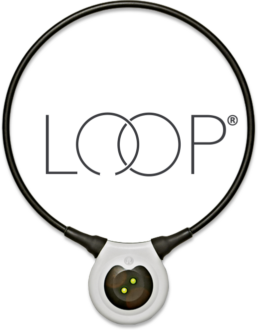
Poppy Phillips, founder of Equine Alternatives, LLC, sat down with Assisi’s very own Dr. Judy Korman, VMD, MBA, to learn more about Assisi Animal Health and targeted pulsed electromagnetic field (tPEMF™) therapy.
PP: Inflammation can be damaging on so many levels. Can you talk about the hardship of inflammation on our pets and how serious it is?
JK: It is very serious. In just the last few years, it’s become clear that the role that inflammation plays in the body is at the heart of a lot of problems, including anxiety. That’s actually the reason we developed Calmer Canine, which reduces inflammation in the anxiety center of the dog’s brain.
Inflammation is incredibly important in the gut. Inflammation causes lots of problems, chronic and acute. Inflammation in the brain, in the joints – we’re just finding out, I think, just really at the tip of uncovering just how important inflammation is at the heart of lots of conditions. Looking at the Assisi Loop, what’s great is that it was developed, studied, and shown to reduce inflammation, and it can be applied to so many different things. And the reason for that is, just like you might take a non-steroidal or steroid to help with joint inflammation or inflammation in an eye, for example, all of these ways of using medicines to reduce inflammation really point to the uses for the Assisi Loop in pets. So, inflammatory conditions are a really long list of conditions for our pets, and pain often goes along with inflammation. So, if you can reduce that inflammation, you can make the pet more comfortable, and then you can certainly increase the quality of life.
PP: So, it even addresses systemic inflammation?
JK: Yes, it can – especially the Loop Lounges. These therapy pads are flat surfaces, but above and below the surface of the pad – at least 10 inches above and below – is the effective therapy field, across the whole pad. It doesn’t have hot spots and low spots. A whole pad is an effective therapy field. So, when an animal is laying on it, if they have inflammation in several parts of their body, all areas are getting treated. So, in that respect, it creates a systemic type of approach.
Also, even with the Loop, which treats a localized area, it sort of permeates through the body to cause a reduction of inflammation in other parts of the body that aren’t being directly treated. So, if you’re a person who has inflammation in their shoulder if you use the Loop, it’s near your wrist that also has inflammation – so your wrist might feel the reduction in inflammation, just because of the systemic effect. Not as strong, which is why we created the pads, which is why we created the pads to treat a larger area or a whole animal. But certainly, that effect is there.
PP: One of my clients says she’s seen benefits using the loop on her cat with asthma – that’s amazing! She first started using it after her cat had some teeth pulled. Both her cats love it.
JK: That is actually very interesting! Asthma is an inflammation in the lungs, so that’s another area where we have found very good utilization – and also dogs with laryngeal paralysis or spasms. That’s another area we’ve seen the loop be very useful for – and dental problems! We think the Loop has huge promise for dental patients. We have so many animals that need extractions and severe dental care and there’s really nothing that most dentists and veterinarians use – at least prior to surgery, and even after surgery – to control the pain and inflammation that occurs with the dentistry. Opioids are used in people and sometimes the fentanyl patch and others are used in animals if there’s a lot of extraction, but we kind of hesitate in veterinary medicine to use opioids and we’re being discouraged to use them because of the abuse potential. So the Loop is a really good way to control that pain and inflammation. We saw in one of the dog studies that I was mentioning that the owners were allowed to use opioids to control their pet’s pain post-surgery, and they watched and counted the number of pills owners administered to their dogs. They found that the dogs that were treated using the Loop were given 50% fewer opioids compared to the placebo group of dogs. So that tells you right there that the Loop is reducing the pain.
PP: One of my coworkers says she used the Loop on her dog after he sprained his neck – that makes me think about tracheal collapse. How would that work with the Loop?
JK: Oftentimes, tracheal collapse involves underlying inflammation in the larynx and trachea. That inflammation is causing this reactive airway. So, reducing that inflammatory tone actually makes it easier for the pets to breathe and not get into those spasms as much.
PP: But it’s also reparative – so it’s not just a temporary, “feel-good” thing. There’s actually a reparative aspect to it.
JK: Yes. So how that’s working is that that inflammation that exists in an area – whether it’s a joint or what we’re talking about, the tracheal area – that’s going on continuously. So the inflammation isn’t just present when, let’s say, a specific event happens, such as the tracheal collapse (when you hear the pet’s difficulty breathing), but all the time, during and after that, there’s inflammation there. So, what the Loop is doing is reducing that tone, those inflammatory cytokines, and adding the anti-inflammatory ones. I like to think of it as a “rebalancing” of that area of inflammation to make it more homeostatic – more like it was before it had a problem. And so that’s why, long-term, you’re getting the benefit of Assisi Loop Therapy (even if you use the device less and less) because you’re returning the pet to a better state.

